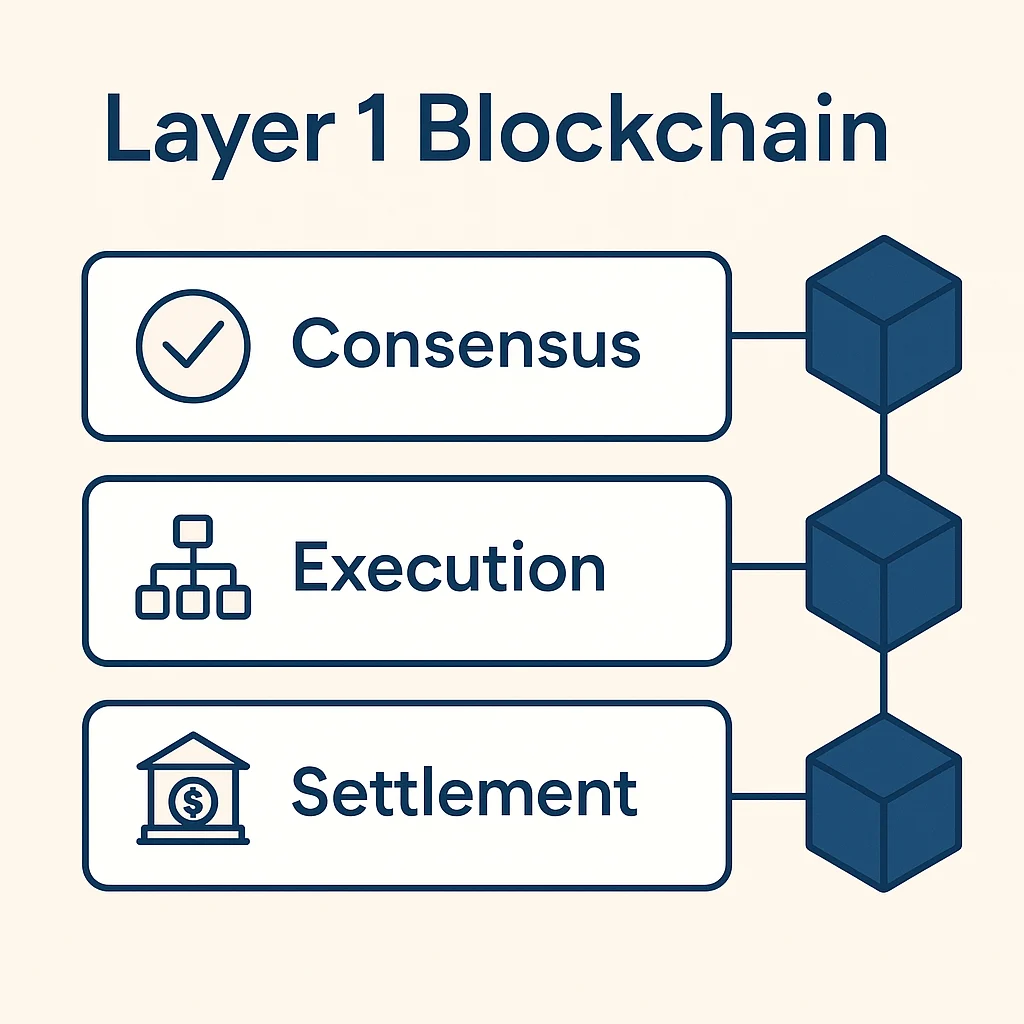Layer 1
Layer 1: The Foundation Blockchain
Layer 1 refers to the base blockchain protocol that processes transactions and maintains consensus. It’s the foundation that everything else builds on top of.
Layer 1 (L1) is the main blockchain network that handles transaction processing, consensus, and security independently without relying on other blockchains. These are the foundational networks like Bitcoin and Ethereum that other solutions build upon.
How Layer 1 Blockchains Work
Complete functionality includes transaction processing, consensus mechanisms, security validation, and native token economics all within the base protocol.
Independence means L1 networks operate without requiring other blockchains for basic functionality like transaction settlement or security.
Scalability limitations often exist as L1s prioritize security and decentralization over transaction throughput, leading to development of Layer 2 solutions.

Real-World Examples
- Bitcoin – The original Layer 1 focused on peer-to-peer digital payments
- Ethereum – Smart contract platform that enabled DeFi and NFT ecosystems
- Solana – High-performance L1 optimized for speed and low costs
Why Beginners Should Care
Foundation understanding helps explain why different blockchains have different capabilities, costs, and security models.
Investment considerations as Layer 1 tokens often represent bets on which fundamental blockchain infrastructure will succeed long-term.
Ecosystem effects since applications built on specific L1s inherit their security, performance, and economic characteristics.
Related Terms: Layer 2, Consensus Mechanism, Base Layer, Blockchain Trilemma
